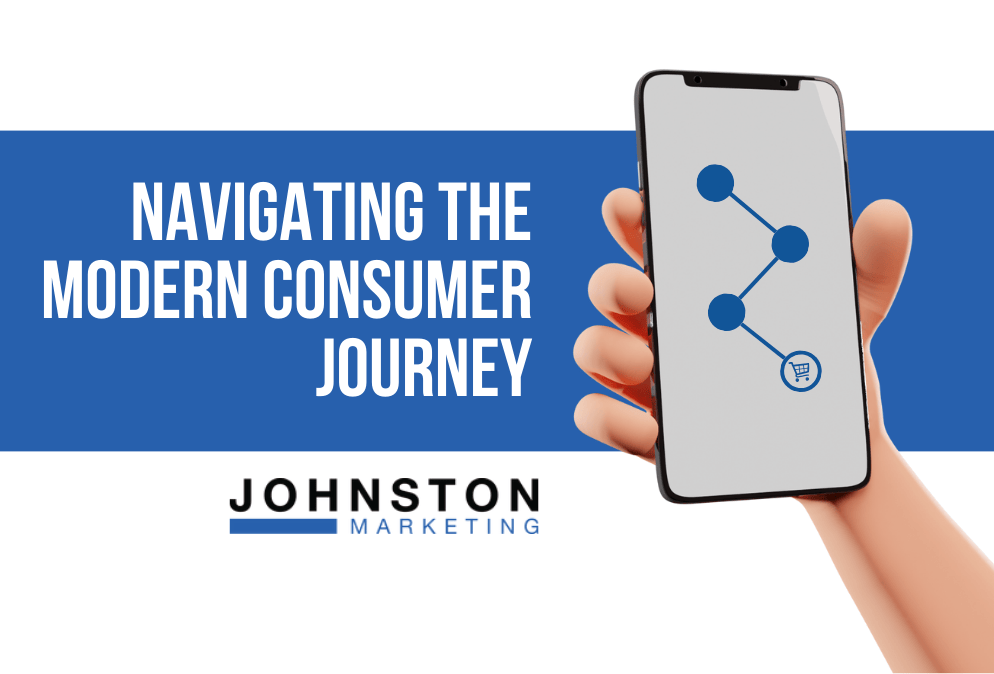Navigating the Modern Consumer Journey: A Comprehensive Guide
In today’s rapidly evolving digital landscape, understanding the modern consumer journey is paramount for any business aiming to thrive in the competitive market. With the proliferation of online channels, social media, and mobile devices, consumers are more empowered and connected than ever before. As a result, their journey from awareness to purchase has become increasingly complex and multifaceted. In this article, we’ll explore everything you need to know about the modern consumer journey and how your business can effectively navigate it to drive growth and success.
1. The Awareness stage
The consumer journey typically begins with the awareness stage, where consumers identify a need or problem they want to address. This stage is characterised by research and exploration, often conducted through online search engines, social media platforms, and word-of-mouth recommendations. To capture consumers’ attention during this phase, it’s essential for businesses to have a strong online presence and engage in targeted marketing efforts. Content marketing, social media advertising, and search engine optimization (SEO) play crucial roles in raising brand awareness and attracting potential customers.
2. The Consideration Stage
Once consumers become aware of their needs, they enter the consideration stage, where they evaluate different options and solutions available to them. During this phase, consumers conduct in-depth research, compare products or services, read reviews, and seek recommendations from peers and influencers. To influence consumers’ decision-making process at this stage, businesses must provide informative content, demonstrate the value of their offerings, and establish trust and credibility. Personalised email campaigns, customer testimonials, and educational resources can help businesses stand out and stay top-of-mind among consumers considering their options.
3. The Decision Stage:
In the decision stage, consumers are ready to make a purchase and are weighing their final choices. Factors such as price, quality, convenience, and brand reputation heavily influence their decision-making process. Businesses can capitalise on this stage by offering incentives, promotions, and seamless purchasing experiences to encourage consumers to convert. Clear calls-to-action, easy checkout processes, and transparent pricing can help remove barriers to purchase and drive conversion rates.
4. The Post-Purchase Stage:
The consumer journey doesn’t end with a purchase—it extends into the post-purchase stage, where businesses have the opportunity to foster long-term relationships with customers. Providing exceptional customer service, soliciting feedback, and offering post-purchase support are essential for building customer loyalty and advocacy. Additionally, engaging customers through follow-up emails, loyalty programs, and exclusive offers can encourage repeat purchases and referrals, further maximising customer lifetime value.


The Importance of Omnichannel Marketing:
In today’s omnichannel landscape, consumers interact with businesses across multiple touchpoints and devices throughout their journey. Therefore, adopting an omnichannel marketing approach is crucial for delivering seamless and cohesive experiences across all channels. By integrating online and offline channels, leveraging data analytics, and employing marketing automation tools, businesses can gain deeper insights into consumer behavior and tailor their marketing efforts to meet evolving needs and preferences.
Harnessing the Power of Data:
Data-driven insights are invaluable for understanding the modern consumer journey and optimizing marketing strategies accordingly. By leveraging analytics tools and tracking customer interactions across various channels, businesses can gain a holistic view of the consumer journey, identify pain points and opportunities for improvement, and make data-driven decisions to enhance customer experiences and drive business growth.
The modern consumer journey is dynamic, nonlinear, and heavily influenced by digital technologies and changing consumer behaviors. By understanding the different stages of the journey and implementing effective marketing strategies that prioritise customer engagement, personalisation, and seamless experiences, businesses can successfully navigate the complexities of the modern consumer landscape and position themselves for long-term success. Embracing innovation, staying agile, and putting the customer at the center of everything they do will be key to thriving in today’s competitive marketplace.


